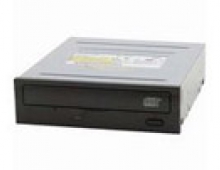
Latest SATA Specification Includes USM Requirements and Enhancements
The Serial ATA International Organization (SATA-IO) today announced the completion of its Revision 3.1 Specification. This latest specification update includes design requirements for the SATA Universal Storage Module (USM) for portable storage applications, along with a series of enhancements for added functionality.
The features included in SATA Revision 3.1 extend the speed and reliability of SATA technology to a wide variety of device segments, including consumer electronics and small form factor devices.
First introduced in January 2011, USM enables removable and expandable storage solutions for consumer electronics devices. Using USM developers can incorporate slots into televisions, game consoles, set-top boxes, computers, docking stations and other consumer electronic devices that will accept powered, cable-free storage modules with integrated powered SATA interfaces for expanding storage capacity. USM provides an easy means for developers to implement SATA technology in a wide range of consumer electronics devices, and is the first standard specification to define slots for these types of products to accept complete, powered external storage devices.
USM products are currently available from Antec, GIEC, HiSense, Ionics, Lenuss, Seagate Technology and Thermaltake.
In addition to USM, SATA Revision 3.1 includes several enhancements that help implementers take full advantage of SATA?s 6Gb/s data rate. Key features include:
- mSATA - SATA for mobile computing devices, now with enhanced auto detection to provide increased interoperability by eliminating the need for a dedicated mSATA connector
- Zero-Power Optical Disk Drive (ODD) - eliminates the power consumption of an idle SATA ODD, resulting in increased energy savings
- Required Link Power Management - drives energy efficient power management across all SATA devices, reducing overall system power demand
- Queued Trim Command - allows SATA SSDs to execute Trim without impacting normal operation, improving SSD performance
- Hardware Control Features - enable host identification of device capabilities, allowing hosts to make more effective use of SATA devices
First introduced in January 2011, USM enables removable and expandable storage solutions for consumer electronics devices. Using USM developers can incorporate slots into televisions, game consoles, set-top boxes, computers, docking stations and other consumer electronic devices that will accept powered, cable-free storage modules with integrated powered SATA interfaces for expanding storage capacity. USM provides an easy means for developers to implement SATA technology in a wide range of consumer electronics devices, and is the first standard specification to define slots for these types of products to accept complete, powered external storage devices.
USM products are currently available from Antec, GIEC, HiSense, Ionics, Lenuss, Seagate Technology and Thermaltake.
In addition to USM, SATA Revision 3.1 includes several enhancements that help implementers take full advantage of SATA?s 6Gb/s data rate. Key features include:
- mSATA - SATA for mobile computing devices, now with enhanced auto detection to provide increased interoperability by eliminating the need for a dedicated mSATA connector
- Zero-Power Optical Disk Drive (ODD) - eliminates the power consumption of an idle SATA ODD, resulting in increased energy savings
- Required Link Power Management - drives energy efficient power management across all SATA devices, reducing overall system power demand
- Queued Trim Command - allows SATA SSDs to execute Trim without impacting normal operation, improving SSD performance
- Hardware Control Features - enable host identification of device capabilities, allowing hosts to make more effective use of SATA devices





















